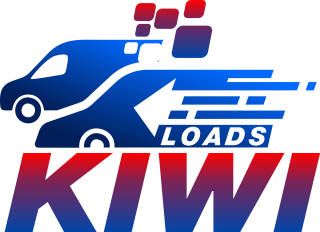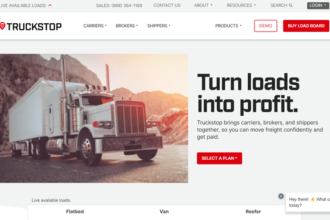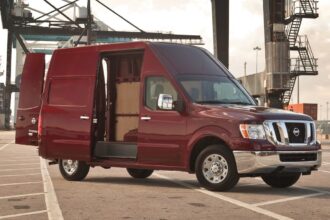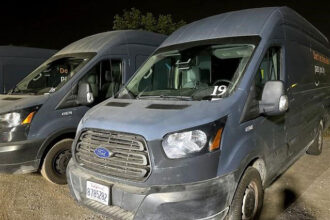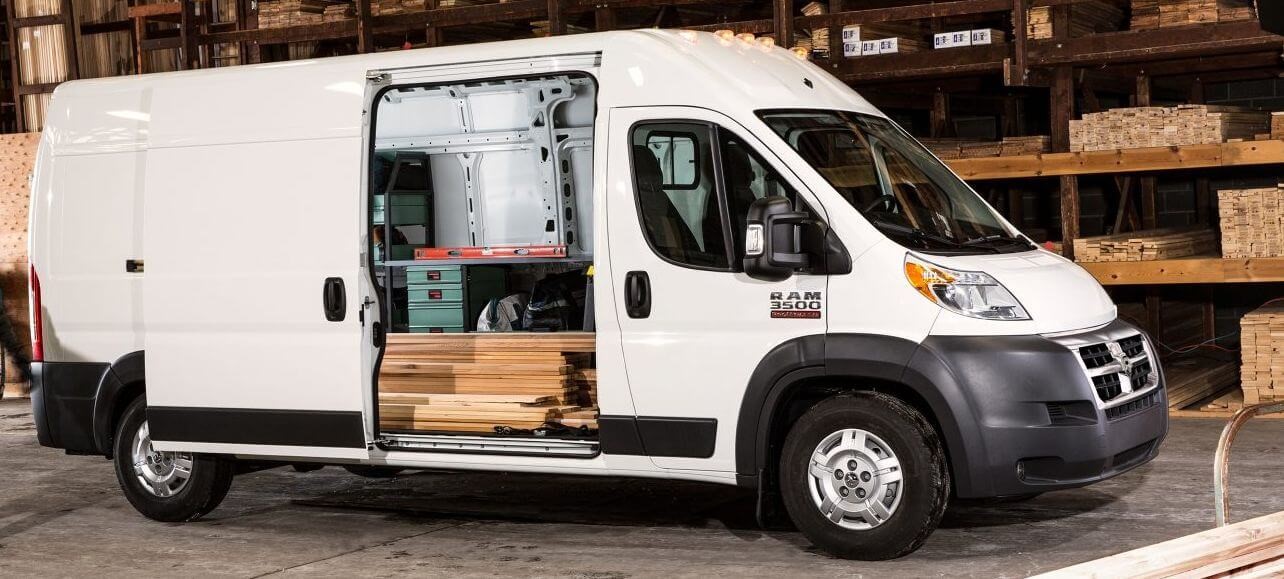Table of Contents
Are you ready to accelerate your business to new heights? Picture this: a robust, dependable straight truck that’s not only a workhorse but also an investment in your entrepreneurial journey. But where do you start? A straight truck, in essence, is a versatile powerhouse designed to efficiently transport cargo. Whether you’re stepping into the realm of local deliveries, setting up a moving company, or any business that demands reliable freight transportation, a straight truck could be your golden ticket. However, like any substantial investment, it’s essential to understand the nuances, tread carefully, and navigate the purchasing process with confidence. So, fasten your seatbelt and get ready to embark on this journey to securing the ideal straight truck for your thriving business.
To buy a straight truck for your business:
- Assess Your Business Needs
- Set a Budget
- Research Truck Types
- Find Reputable Sellers
- Inspect the Truck
- Review the Truck’s History
- Consider Customization
- Negotiate the Price
- Arrange Financing
- Factors in Operating Costs
- Understand Legal Requirements
- Manage Transportation and Delivery
- Consider Warranty Options
- Establish a Maintenance Plan
- Finalize the Purchase
Secure Appropriate - Insurance
- Register Your Business
Recap
1. Assess Your Business Needs
To make an informed decision when purchasing a straight truck, start by evaluating your business needs. Consider the cargo you intend to transport, the routes you’ll take, and any specific equipment requirements. For instance, if your business involves local furniture delivery, a smaller straight truck might suffice. The key is aligning the truck’s specifications with your operational needs.
2. Set a Budget
To ensure your investment aligns with your financial resources, setting a clear budget is crucial. Calculate your budget and allocate funds for the truck’s purchase. Remember to account for potential customization, insurance, and licensing fees. If, for instance, you’ve set a $40,000 budget, you’ll focus your search on trucks within this range to avoid overextending your finances.
3. Research Truck Types
To buy the right straight truck, you must explore the various truck types available on the market. Different truck types serve distinct purposes. Box trucks are excellent for moving services, while refrigerated trucks are ideal for transporting perishable goods. By researching and understanding these types, you’ll make an educated choice that suits your business niche.
4. Find Reputable Sellers
To find the ideal straight truck, research and connect with reputable truck sellers. Start by searching for well-established dealerships and reading reviews or seeking recommendations from industry peers. You can also visit showrooms and examine the trucks in person. If, for instance, you’re buying from a reputable dealership like “ABC Truck Dealers,” you can trust the quality of their vehicles.
5. Inspect the Truck
To make a smart purchase, inspecting the straight truck thoroughly is non-negotiable. Examine critical components such as the engine, tires, brakes, and any specialized equipment. A test drive can reveal how the truck performs on the road. For example, while inspecting the engine, listen for unusual noises and check for any signs of oil leaks, which could signal potential problems.
6. Review the Truck's History
To gain insights into the truck’s history and performance, reviewing its past is vital. Request maintenance and accident history records to ensure the truck has been well-maintained and hasn’t been in severe accidents. The records may reveal that the previous owner consistently performed oil changes and regular inspections, which is a positive sign of responsible ownership.
7. Consider Customization
To tailor the truck to your business needs, consider the potential for customization. Depending on your cargo and industry, assess whether the truck requires custom features like racks, shelves, or refrigeration units. If, for example, you plan to start a mobile catering business, you’ll need a truck with specialized kitchen equipment to meet your unique requirements.
8. Negotiate the Price
To secure a favorable deal, negotiating the truck’s price should be part of your strategy. Don’t hesitate to negotiate with the seller. Research the market value to make well-informed offers. If the listed price for a used truck is $25,000, effective negotiation might result in a final price of $23,000, which would save you $2,000.
9. Arrange Financing
To facilitate the purchase, explore financing options for your straight truck. Investigate various financing possibilities, such as loans, lease-to-own agreements, or attracting investors if necessary. Let’s say you choose to secure a loan through a local credit union. This financial support can be pivotal in acquiring your truck.
10. Factors in Operating Costs
To ensure long-term profitability, calculating operating costs is a key step. Beyond the initial purchase, account for ongoing expenses, including fuel, maintenance, insurance, and licensing fees. This comprehensive approach will help you manage your financial resources effectively, guaranteeing that your business remains financially sustainable. For instance, a delivery service needs to consider the monthly fuel costs, insurance premiums, and regular maintenance expenditures.
11. Understand Legal Requirements
To stay compliant with regulations, understanding the legal requirements for your straight truck is a must. Investigate the specific permits, licenses, and legal obligations for operating a straight truck in your area. For instance, if you’re transporting hazardous materials, there are specific permits and safety measures required to comply with legal standards.
12. Manage Transportation and Delivery
To oversee transportation and delivery effectively, a sound management plan is necessary. Develop a strategic plan for scheduling, route optimization, and cargo handling. In practice, a flower delivery business might require coordinating with multiple florists and synchronizing deliveries for special events. An efficient plan is essential to meeting your business objectives and customer demands.
13. Consider Warranty Options
To safeguard your investment, consider warranty options for your straight truck. Check whether the truck comes with a warranty and thoroughly understand its coverage. An inclusive warranty can potentially save you money on unexpected repairs. For example, a straight truck with a comprehensive 5-year warranty offers peace of mind for the initial years in business, reducing potential repair costs.
>>>PRO TIPS: Straight Truck LLC: Everything You Must Know
14. Establish a Maintenance Plan
To keep your truck running smoothly, establish a robust maintenance plan. Set up a maintenance schedule that includes regular check-ups, oil changes, and inspections to ensure your straight truck remains in optimal condition. For instance, plan monthly check-ups, keep detailed records, and adhere to maintenance tasks to prevent unexpected breakdowns and ensure your truck’s longevity.
15. Finalize the Purchase
To complete the purchase, it’s time to finalize the deal and take ownership of your straight truck. Ensure all the necessary documents are in order, including the bill of sale, transfer of title, and any financing agreements. For example, request a clean bill of sale from the seller, listing the purchase price, terms, and conditions, which signifies the official handover of the truck.
16. Secure Appropriate Insurance
To protect your investment, secure the right insurance coverage for your straight truck. Purchase insurance that caters to your business and cargo needs, encompassing liability, cargo coverage, and any additional protection required. For instance, if your business involves food delivery, you’ll need specialized cargo insurance to safeguard your inventory against spoilage or damage during transport.
17. Register Your Business
To operate legally, register your business in accordance with local regulations. Ensure that your business is officially registered with the appropriate local and state agencies. This includes obtaining the required permits and licenses to operate your straight truck within legal parameters. If, for example, you’re based in Florida, you’ll need to register your business with the Florida Department of State and obtain any necessary permits for commercial truck operation to stay compliant with state regulations.
Recap
In summary, acquiring a straight truck for your business is a strategic investment requiring meticulous planning and execution. The journey involves assessing your business’s unique needs, setting a budget, researching various truck types, connecting with reputable sellers, and inspecting and reviewing the truck’s history. Customization and negotiation skills play crucial roles in securing a favorable deal. Exploring financing options and accounting for long-term operating costs are vital steps, while compliance with legal requirements is non-negotiable.
Effective management plans, including maintenance and warranty options, ensure the truck’s reliability, and finalizing the purchase involves completing the necessary paperwork. Protecting your investment with the right insurance and registering your business to operate legally under local regulations is the final touch. Following these steps paves the way for a successful business venture, promising growth and prosperity on your entrepreneurial journey in the United States.
